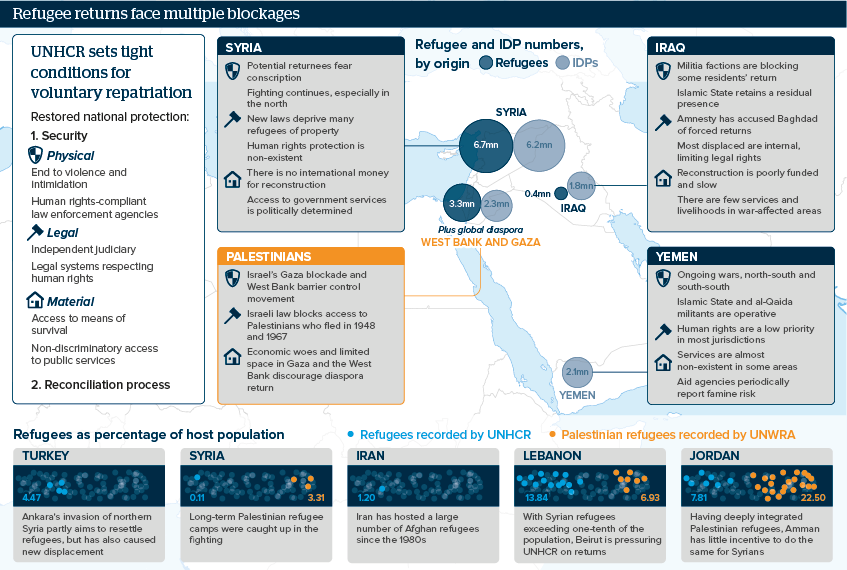Long-term refugee problems may mould the Middle East
Refugees and IDPs who do not return home within six months have a high probability of protracted displacement
Source: UNHCR, UNWRA, UN World Population Prospects, UN-OCHA, ODI
Outlook
Syrian refugees will present an intractable problem to most neighbouring countries, with Damascus unlikely to reform legal frameworks to reintegrate suspected dissidents.
Although Iraq has been a comparative success story, local insecurity and lack of services persist and will be worsened by ongoing protests. Many internally displaced persons (IDPs) will hesitate to return home, especially those taking refuge in the relatively safe and affluent Kurdistan region.
The Palestinian models of long-term refugee camp cities and urban demographic shifts may therefore be perpetuated in other cases -- while the Palestinians themselves still suffer from recent regional tensions and are further than ever from establishing a “right of return”.
Impacts
- Turkish plans to build refugee cities in Kurdish-claimed northern Syrian districts will attract charges of demographic engineering.
- IDPs in Syria, Iraq and Yemen have even less protection than refugees; they are more likely to return, but slowly.
- In the long term, deep structural economic and political problems in Lebanon and Jordan risk instability and secondary displacement.
See also
- Displaced Iraqis and Syrians face unsafe returns - Nov 10, 2020
- Middle East displacement is a looming COVID-19 threat - May 28, 2020
- Pressure over Syrian refugees will grow in host states - Aug 29, 2019
- More graphic analysis
